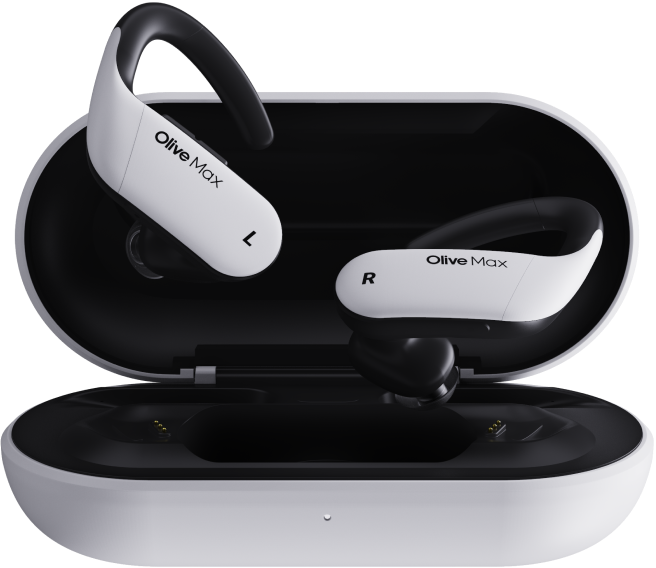
Cochlear Implants vs. Hearing Aids : Key Difference
Hearing aids and cochlear implants both provide the same basic function; helping those with hearing loss hear. The differences end there, however, as the two devices handle this job in completely different ways.
What’s The Same?
Before we dive into what’s different, let’s take a brief look at how they are similar.
Both hearing aids and cochlear implants are used to help people who have sensorineural hearing loss. This type of hearing loss involves damage to the hair cells in the cochlea of the inner ear or the nerve pathways that go from the inner to the brain. More Americans experience this type of hearing loss than conductive hearing loss, which involves damage to components in the outer ear.
Despite treating the same thing, however, hearing aids are used by approximately 12 million Americans, but only 50,000 Americans use cochlear implants. Quite the difference! And speaking of differences…
Cochlear Implants Are Surgically Implanted, Hearing Aids Are Worn Externally
Probably the biggest (and definitely most visually obvious) difference between the two is how they are worn.
Cochlear implants require surgery to implant the internal components in the inner ear and then attach a component to the mastoid bone. Once it has been implanted you can’t easily remove it. Although hearing aids have a component that fits into the ear canal, they are considered external devices and are easily removable whenever desired.
How They Help You Hear
The difference in how they are worn is not just an aesthetic choice – it is directly linked to how the devices help you listen and perceive sound as well!
Hearing aids amplify sounds entering the ear canal, essentially boosting the sound signal to help the damaged inner ear hairs receive that signal. As long the hair cells are only mildly to moderately damaged, sounds can be picked up in the cochlea, transmitted to the auditory nerve and to the brain, and understood. But the more the hair cells are damaged the more severe the hearing loss becomes. At a certain point of damage severity, no matter how powerful the hearing aid is, the damaged hair cells can not pick up sounds and transmit them to the auditory nerve. At this point, hearing aids become of little to no use.
That’s where cochlear implants can help.
A cochlear implant works by bypassing the hair cells altogether, essentially replacing their job. The implant uses electrodes that are implanted onto the cochlea to transmit sound information gathered from an external microphone to stimulate the auditory nerve directly in the form of electrical impulses which go on to the brain. The damaged hair cells in the cochlea are not used at all. For this to work, the implant has to transform sound information into electrical impulses which are received by the brain. In this way, cochlear implants do not restore hearing; rather, they simulate hearing or give the sensation of sound for people that are deaf or near deaf.
One important thing to note is that because cochlear implants are simulating hearing and not restoring it, therapy and rehabilitation is required to learn how to perceive and understand the new sounds.
For a more in-depth and detailed read on cochlear implants, check out our cochlear implant article here!
Accessibility

As you might have been able to guess from the information presented so far, cochlear implants are much more difficult to obtain than hearing aids. Because of the commitment involved with cochlear implants, candidates must be evaluated by multiple health professionals including an audiologist, otolaryngologist, speech-language pathologist, and possibly a psychologist before purchase.
The implant surgery only takes two to four hours, but a huge time commitment is required for the rehabilitation component and will require years of speech therapy and practice so that your brain can properly interpret the new sounds that it is experiencing.
Hearing aids, although they require testing and prescription by a hearing care specialist, are much easier to obtain compared to cochlear implants. A visit and consultation with an audiologist is still required, but aside from that, you can easily purchase one on the day of your visit.
Cost & Other Differences Between Cochlear Implants
Speaking of purchasing, the cost is another key difference between hearing aids and cochlear implants. Hearing aids are expensive, ranging from around $1,000 and even up to $5,000 per single device.
However, implants can cost up to $100,000! Luckily, while insurance coverage for hearing aids is highly variable, cochlear implants are usually covered by Medicare or Medicaid. Due to the high cost of cochlear implants, many surgeons have staff dedicated to helping patients navigate their coverage of such devices.
Cochlear implants require care when engaging in athletic activities, particularly contact sports. Also, because it is an electronic device, if you go swimming the external portion must be removed (waterproof versions are available). Hearing aids require less care; waterproof versions are available as well as waterproof covers or the entire device can easily be removed before engaging in the activity.
Cochlear implants have potentially serious side effects including dizziness, facial paralysis, and meningitis. If hearing aids cause discomfort, they can easily be removed and replaced with a different model.
Ultimately, the best way to determine whether hearing aids or cochlear implants are right for you or your child is to visit an audiologist for a hearing test and receive their professional consultation.
The information in this guide has been written using the following reliable sources:
asha.org/, hchearing.org/, templehealth.org/, audiology.org/, cchatsacramento.org/, onsumeraffairs.com/, healthyhearing.com/, nidcd.nih.gov/
The post The Key Differences Between Cochlear Implants And Hearing Aids appeared first on Olive Union.









